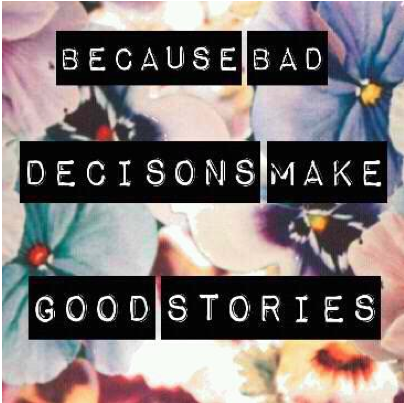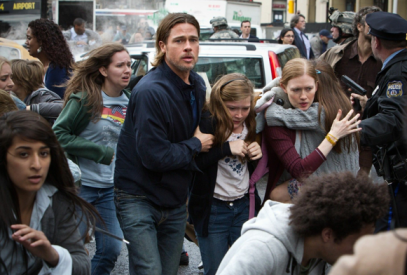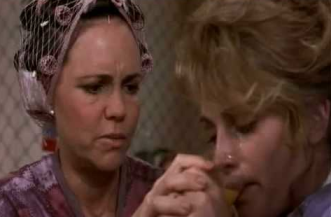Kristen Lamb's Blog, page 70
October 30, 2013
Blog Hijack Part Deux – WANA Goings On
By Jay Donovan
Yes, it’s me again, Kristen’s Tech Guy. Kristen has family issues hitting her hard and has been nursing a loved one back to health. We’ll have to wait for a future blog post to learn if Nurse Kristen is more Florence Nightingale or Nurse Ratchet.
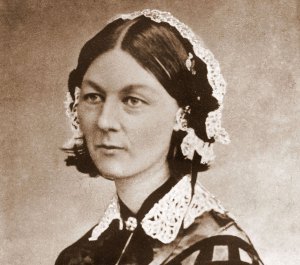
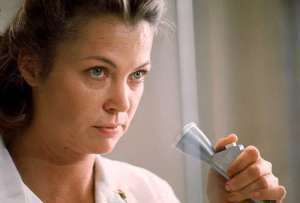

In her seeming desperation, she handed me the keys to her blog. Again…
You’d have thought she’d have learned after I hijacked her site last time. Then again, knowing Kristen, she’s aware that I ‘sampled’ a couple glasses of wine while TechGirl and I made lasagna. Kristen’s call for help at an ungodly late hour is most likely a ploy Sun Tzu would be proud of.
Regardless, challenge accepted!
Actually, this is a fantastic chance to catch everyone up on the goings on in WANAville.
First off, thanks to everyone who joined us for the October WANACon Writers Conference. We appreciate your trust in us and hope you had as good a time as we did. For those who couldn’t join us, the session recordings are available for On Demand viewing here.
The next WANACon will be Friday February 21st and Saturday February 22nd, (hopefully) far enough from the chaos of the holidays that a conference track on what to do next with your NaNoWriMo creation makes sense, and close enough to Valentine’s Day for one on writing romance.
Keep up with all the details by visiting WANACon.com or joining our mailing list.

WANA Classes are going On Demand
We’ve heard you. And finally the technology allows us to bring you an “On Demand” class experience that is good enough to receive the WANA… ->
We’re not moving away from live classes, but with busy WANAs all over the globe, we’re structuring classes to be more flexible for those who can’t attend live.
We’ll be adding dozens of classes by amazing instructors over the next few months. Click for our Current Class List or to join our mailing list.
And a shameless plug…
Book Tours in Your PJs
On Friday, my company, TechSurgeons is adding an new Author Service – Virtual Book Tours. They’ll use the same tech WANA uses for WANACon and live classes. At an introductory price of $50, you can rent a virtual room for 6 hours for you and up to 10 others at a time. You’ll be able talk to your readers, share web cams, instant message with the shy ones, display PDFs of sample chapters, extras, and ‘out takes’ or whatever creative ideas you have. Contact me for more details.
 Remember WANATribe, -the- private social media site by authors for authors.
Remember WANATribe, -the- private social media site by authors for authors.
We have Tribes for all genres and interests. And if you don’t see the one you want, you can create it. Joining and using WANATribe is free.
As a thank you prize for reading putting up with my post, here’s a video of (I believe) George Clooney and Brad Pitt dueling with a flamethrower and fire extinguisher. Inside sources claimed this was filmed just before they went to their respective makeup artists.
Okay, that was mean. Here’s an amazingly cool video of the Ohio State band performing their “Hollywood Blockbuster” Show.
*********

Geek in His (un)Natural Habitat
Jay Donovan is the official WANA Tech Guy and takes care of all WANA’s technology needs. He’s writing an “Expansion Pack” on the proper use of pen names to supplement Kristen’s “Rise of the Machines” and should be working on it instead of hijacking blogs and talking about himself in third person, but where’s the fun in that?
Jay’s company TechSurgeons LLC provides the geeky magic for WANACon and WANA classes. TechSurgeons also hosts the WANAIntl.com & authorkristenlamb.com websites. He’d love to be your tech guy too.
Find him on Twitter at @jaytechdad or on Facebook


October 25, 2013
Novels & The “Knockout” Ending

Image via Flikr Creative Commons, courtesy of Anamorphic Mike.
The past few posts, we’ve been talking about the fabulous James Scott Bell’s LOCK System. LEAD, OBJECTIVE, CONFLICT, and, finally, KNOCKOUT. Jim’s given me permission to talk about his system, but there is NO substitute for his fabulous book Plot & Structure. It’s one of the BEST writing references out there.
I am sure many of you’ve had this same experience with either a book or a movie. The characters are great, the story riveting, tense, and you can’t wait until the…..eh? WTH? Was that the ENDING? Really? I invested TWELVE HOURS of reading for THAT? And then you toss the book across the room or tell every friend you know not to watch Such-and-Such movie. I think it’s worse with novels because readers have a lot of time (they don’t really have to spare) invested.
I remember one book I read a couple years ago. It was beautifully written and had me on the edge of my seat. I couldn’t wait to figure out the truth to this mystery and when it was revealed? O_o.
I wanted to run the book through an industrial paper shredder.
Needless to say, endings are important. There are all kinds of endings: clear, unclear, twist, positive and negative. All will work if we execute them well (so buy Jim’s book and he can tell you how).
Knockout
So your novel has thrust a likable, relatable protagonist into a collision course with the Big Boss Troublemaker. The Big Boss Battle must deliver all you (the writer) have been promising. Endings tie up all loose ends and sub-plots and, if we have done our job, will leave the reader a feeling of resonance.
Your protagonist MUST face down the BBT. No fighting through proxies. Darth (Anakin) had to face The Emperor. Agent Clarice Starling had to take down Buffalo Bill. Harry had to take out Voldemort. Spooner had to kill VIKI (I, Robot).
By employing skills learned over the course of the story and growing and maturing from protagonist to HERO, the protagonist is finally equipped to triumph.
Same in literary works.
Evelyn Couch (Fried Green Tomatoes) had to stand up to her husband (who was as useful as ice trays in hell) and her abusive monster-in-law. She couldn’t send in Ninny Threadgoode to do it for her. In the movie’s climactic scene, Evelyn employs the “Jedi skills” she learned from stories about Idgy. Her Jedi skills are confidence and self-respect, and she uses them to defeat her oppressors by refusing to take any more of their sh—enanigans.
This is why all this “my protagonist is the BBT/antagonist” WON’T WORK. In Fried Green Tomatoes, Evelyn is her own worst enemy. She is spineless and weak. But, the real enemy resides in those who desire to control and bully Evelyn. In each act of the movie, we see Evelyn learning confidence so that by the end, the BIG battle, she can tell her abusive mother-in-law and Momma’s Boy Hubby to stuff it.
She isn’t having an argument with herself. She is standing up to a very real external antagonist…even though this is a character/literary story. Characters having inner angst for 80,000 words is therapy, not fiction. Humans do better with the tangible. Existentialism is great for torturing college freshmen, but for a mainstream successful novel? Not the best approach.
If you plan on writing a connected series, every book must stand on it’s own. If we get hit by an ice cream truck after publishing Book One, the story should be good enough. No 1960s “Batman Endings” where we leave the reader on a cliff to manipulate them into buying the next book.
There are two types of series in my world: connected (I.e. Lord of the Rings) and episodic (crime novels). In Lord of the Rings, we follow a larger story and more is revealed with each book until a final climactic ending. In episodic books, readers are following a beloved character, but each story is different and self-contained (I.e. Agatha Christie mysteries).
If we have several books in a connected series, a reader might not pick up Book One. She might pick up Book Three. The story must still satisfy, and, if it does, likely the reader will seek out the earlier works to catch up.
When we have a connected series, we have ONE BIG BBT (I.e. Sauron) but each book still completes the story problem. There are mini-BBT’s which represent the main BBT.
Uruk-Hai—> Sauroman—> Sauron
Each book has a complete arc. Uruk-Hai dead, Sauroman defeated, Ring of Power melted, killing Sauron and all his evil power. When placing all three books together, each book will be an “act” of the larger work.
Summing Up
So when you get that nugget of an idea and think, Hmm. THAT is my novel. Try using the LOCK system. Ask yourself:
Can I cast a LEAD who is relatable, likable, or at least empathetic?
Is this OBJECTIVE something that will keep readers interested for 60, 000-100,000+ words?
Can I create a BBT and opposition force capable of generating plenty of CONFLICT to keep my lead from her objective?
Does this story problem lend itself to a KNOCKOUT ending?
This is just a taste of the good stuff that James Scott Bell has to offer in Plot & Structure so I recommend buying a copy for your writing library.
What are the biggest problems you guys have when it comes to developing your endings? What are some setbacks you have faced? Do you guys have any recommendations for resources? Or, feel free to commiserate and laugh about all the good ideas that went oh so wrong.
To prove it and show my love, for the month of October, everyone who leaves a comment I will put your name in a hat. If you comment and link back to my blog on your blog, you get your name in the hat twice. What do you win? The unvarnished truth from yours truly. I will pick a winner once a month and it will be a critique of the first 20 pages of your novel, or your query letter, or your synopsis (5 pages or less).
Also, for all your author brand and social media needs, I hope you will check out my new best-selling book Rise of the Machines—Human Authors in a Digital World.


October 23, 2013
Conflict—Giving LIFE to Your Fiction
Bad decisions make GREAT fiction. I know it’s tough to not write about fully evolved/self-actualized characters, but those guys are B-O-R-I-N-G. We like to watch people grow, probably so we might glean some hint of how to grow, ourselves. The more messed up a character is? The more INTERESTING they become.
Come on! You know it.
If you were at a restaurant and had a choice of where to eavesdrop, would it be the couple talking about their plans for the week as a team baking cookies for the school? Or would it be the nasty breakup on Table 6?
If we don’t have conflict, the story falls flat. Everything comes too easily and that is a formula for a Snooze-Fest. I am SO HUMBLED and honored to be friends with THE LEGEND Les Edgerton. In his mind? NOTHING comes easily. Even if your protagonist just wants directions, she should get, “What? Do I look like Google Maps?” in response.
Conflict
Once you get an idea of what your protagonist’s end goal is, you need to crush his dream of ever reaching it (well, until the end, of course). Remember, last week we talked about the Big Boss Troublemaker and log-lines. Generally (in genre novels especially), it is the BBT is who’s agenda will drive the protagonist’s actions until almost the end.
The CORE ANTAGONIST (what I call the BBT) is responsible for creating the problem that 1) disrupts the protagonist’s life 2) forces change and growth 3) is in need of clear resolution by the end. No core problem and there is no clean way to end the book.
Your protagonist will be reacting for most of the novel. It is generally after the darkest moment that the protagonist rallies courage, allies, hidden strength and suddenly will be proactive. THIS is the point when the protagonist has CHANGED enough to become a HERO.
Logical disasters are birthed from good plotting (and a solid core problem). One of the reasons I am a huge fan of doing some plotting ahead of time is that it will be far easier for you to come up with set-backs and disasters that make sense.
There is a scene from the Mel Brooks film Blazing Saddles that I just LOVE. The prime villain, Hedley Lamarr, is interviewing scoundrels to go attack a town he wants to destroy so that he can build the railroad through it. There are all kinds of bad guys standing in line to give their CV.
[image error]
Via the Mel Brooks classic “Blazing Saddles”
Hedley Lamar: Qualifications?
Applicant: Rape, murder, arson, and rape.
Hedley Lamarr: You said rape twice.
Applicant: I like rape.
This sequence used to be quoted quite a lot in my workshop. Why? Because there are many new writers who, upon noticing doldrums in their novel, will insert a rape scene.
I am not making this up O_o.
And if I hadn’t seen it so many times in my career, I wouldn’t have brought it up. We can chuckle, but this is fairly common to the new writer, just as it is common for children to write the letter “c” backwards. It is a heavy-handed attempt by a new writer who hasn’t yet developed plotting skills to raise the stakes and tension. Robberies, car chases and rapes are justifiable conflict, if they genuinely relate to the story. Otherwise, it’s contrived and awkward.
The Many Faces of the Antagonist
There is ONE BBT. Sauron, Buffalo Bill, VIKI, Loki, Darla the Fish-Killer all create the core story problems the protagonists must resolve. Ah, but along the way, there should be conflict in EVERY scene. Conflict often will come from multiple directions. There will be the long-range conflict (I.e. drop evil ring into volcano in Mordor) and short-range conflict, which is very often generated by allies (run from angry pitch-fork-wielding-farmer because Merry and Pippin stole veggies).
The antagonist role can shift. It can be friends, family, coworkers, but these guys are not the CORE antagonist.
[image error]
From the film, “I, Robot.”
For instance, in I, Robot, VIKI (the computer controlling all the robots) is the Big Boss Troublemaker. Yet, who generates much of the conflict? ALLIES who are acting as antagonists.
Whether it’s the protagonist’s grandmother, “Look, I won an evil robot in the lottery! See how well he handles a KNIFE? We’ve been cooking ALL DAY! Whee!” or his boss “What robots tried to kill you? The tunnel was clean and you’re imagining things. Gimme your badge,” poor Spooner CANNOT get a break.
The more the robots try to kill him, the more his allies protest and create roadblocks, generating conflict.
Even in literary works, there has to be external conflict. A book of navel-gazing is not literary. It’s navel-gazing. In the Pulitzer-Winning book and later Oscar-Winning movie The Hours each story is a manifestation of Virginia Woolf’s classic novel Mrs. Dalloway. And, if you watch the movie or read the book, it’s WAY better if you’ve actually read Mrs. Dalloway.
[image error]
From the Oscar Award Winning Film, “The Hours”
Clarissa wants to help her former lover-friend who is ravaged by AIDS, but he refuses help and torments her by calling her Mrs. Dalloway (who was a woman searching for meaning). Mrs. Dalloway arranges the flowers and flitters around planning parties, but deep down believes she’s a non-entity.
Clarissa is the same. She has become what she fears and those around her only reinforce this insecurity. Clarissa can’t connect to her lover, her friend or her daughter and there are roadblocks at every turn.
One way we can ensure we have conflict is to use the Blake Snyder method. In each scene, ask “Protagonist wants X, but then….” Someone or something should stand in the way, and it is better if it’s someone. Remember all good characters have baggage and issues like real people. This is what will make your cast more than talking heads. I know it is counterintuitive, but this is why writing is HARD. Humans avoid conflict, but great writers dive straight for it.
What are your thoughts? Questions? What books or movies ratcheted the tension so high you thought your nerves might just snap?
I LOVE hearing from you!
To prove it and show my love, for the month of October, everyone who leaves a comment I will put your name in a hat. If you comment and link back to my blog on your blog, you get your name in the hat twice. What do you win? The unvarnished truth from yours truly. I will pick a winner once a month and it will be a critique of the first 20 pages of your novel, or your query letter, or your synopsis (5 pages or less).
Also, for all your author brand and social media needs, I hope you will check out my new best-selling book Rise of the Machines—Human Authors in a Digital World.


October 21, 2013
The Heart of Great Stories—How to Create Clear, Interesting Character OBJECTIVES
Image from the 2013 movie “Haunter”
Friday, we talked about how to create protagonists readers will love. James Scott Bell in his book Plot & Structure introduces what he calls the LOCK system (which he has generously given me permission to discuss). LEAD, OBJECTIVE, CONFLICT and KNOCKOUT.
As storytellers, we must create a sympathetic, compelling lead if we want readers to engage. This is especially critical for longer works like novels or series. The longer the work, the more readers must love the protagonist, because they’ll be spending a lot of time together  .
.
Yet, an interesting protagonist is not enough. We have to have an actual story, which demands an interesting objective.
Objective
Your protagonist MUST have a clear objective. There are many times I go to conferences and I see all these excited writers who are all dying to talk to an agent. When I ask, “So what’s your book about?” I often get something akin to, “Well, there is this girl and she has powers, but she didn’t know she had powers, because, see. Hold on. Okay, her mother was a fairy queen and she fell in love with a werewolf, but werewolves in my book are different. Anyway she has a boyfriend in high school, but he is actually the leader of a group of wizards from another dimension and he is pitted against his inner demons because he lost his father in a battle against shape-shifters….”
Huh? *looks to wine bar in the corner of the room*
Your protagonist must have ONE BIG ACTIVE GOAL.
This past weekend, we watched an AWESOME movie, Haunter. From the movie log-line, I knew I was probably in for a really good story, and BOY I was right.
The ghost of a teenager who died years ago reaches out to the land of the living in order to save someone from suffering her same fate.
This was a really engaging story, and I’m being super careful not to ruin anything, but early on, we realize something is amiss our teenage protagonist’s household. The same day keeps repeating over and over and over and only she’s aware they’re trapped. But why? How? Very early her objective becomes clear. Save her family by saving another family and break their curse.
Very simple objective, but loads of twists and turns. Really fab ghost story even for those a tad timid about horror, but it IS Halloween  . This movie wasn’t gory, just a wonderful spooky mystery.
. This movie wasn’t gory, just a wonderful spooky mystery.
Another interesting movie I watched recently is The Purge. This isn’t per se horror, rather a speculative thriller, but it does a great job of probing at our darker natures and asking What if? The objective is clear.
In the future, a wealthy family is held hostage for harboring the target of a murderous syndicate during the Purge, a 12-hour period in which any and all crime is legalized.
This movie questions the nature of morality and what it means to be human. Sure, this is supposedly a utopian future. Crime is almost non-existent, Unemployment is at 1%, and the economy is flourishing, but at what price? The protagonist makes a fortune selling security systems for people to survive The Purge—one night a year when all crime is legal.
Hate your boss? Have a grudge against that guy who borrowed your weed-eater and never returned it? Well, apparently in the future, on my birthday, all murder is legal (yes, Hubby had great fun tormenting me about that). So feel free to hunt down your deadbeat ex with a machete.
One night a year everyone has a Get Out of Jail FREE Card.
Yet, funny how the protagonist’s tune changes (Yay, Purge!) when he and his family become the hunted (Hey, wait, The Purge might be morally wrong! GASP!). The protagonist’s objective is clear.
When a wealthy many who supports The Purge (and makes boatloads of money off it) offers sanctuary to a homeless vet who’s been targeted for extermination, he’s forced to choose between his family’s safety or protecting a man he doesn’t even know against homicidal sociopaths.
This is a super interesting movie, but if you’re a Texan, I warn you’ll spend most of your time critiquing poor tactics.

Image via the 2013 Thriller “The Purge”
Yet, as much as this family was apparently unaware of proper use of The Funnel of Death I still enjoyed it because it generated great discussion. It did what good stories should do. Make us THINK because it offered a warped yet interesting objective.
All great stories have clear objectives. Yes, even literary pieces.
Don’t believe me? Okay. Here’s a good example. I was going to go with The Road but after Haunter and The Purge I chose a lighter example and one that was both a movie AND a novel, because I can already hear….
Oh, but Kristen, those are movies. Novels are different.
Um…yeah, but not really. I use movies as examples of storytelling because it saves time. But, here’s an example in the world of literary fiction that was made into a movie (that actually stuck very close to the book) to make you feel better that I am steering you down the correct path.
The Joy Luck Club by Amy Tan could have been just a collection of tales about three generations of Chinese women, but they weren’t. There was an active goal to all of these stories. The mothers left China in hopes they could change the future for their daughters, and yet the old cycles, despite all their good intentions, repeat themselves and echo the same pain in the lives of their daughters. Actually the protagonist in the book is the collective—The Joy Luck Club.
[image error]
Image via “The Joy Luck Club.”
The stories propel the living members of the Joy Luck Club toward the active goal of finding courage to change the patterns of the past. The mothers seek forgiveness and the daughters struggle for freedom, but each is actively searching and eventually finds something tangible. In every story, each girl has a clear goal whether that is standing up to an abusive spouse and moving on or boarding a boat to China to meet missing sisters.
Keep in mind that running away from something or avoiding something is a passive goal. Not good material for novels. Novels require active goals…even the literary folk  .
.
What are your thoughts? What movies or books REALLY made you think? I love stories that twist up my brain and beg for debate. What about you?
I LOVE hearing from you!
To prove it and show my love, for the month of October, everyone who leaves a comment I will put your name in a hat. If you comment and link back to my blog on your blog, you get your name in the hat twice. What do you win? The unvarnished truth from yours truly. I will pick a winner once a month and it will be a critique of the first 20 pages of your novel, or your query letter, or your synopsis (5 pages or less).
Also, for all your author brand and social media needs, I hope you will check out my new best-selling book Rise of the Machines—Human Authors in a Digital World.


October 18, 2013
Creating a Protagonist Readers Will LOVE

Bridgette Jones Diary
I assume that most of you reading this aspire to be great novelists, even those who are preparing to take the NaNoWriMo Challenge in November. Novels are only one form of writing and, truth be told, they aren’t for everyone. Stringing together 60,000-100,000+ words and keeping conflict on every page while delivering a story that makes sense on an intuitive level to the reader is no easy task.
That said, all novels begin with an idea. We talked a bit about how to create a SOLID idea yesterday. Many new writers start out with nothing more than a mental snippet, a flash of a scene or a nugget of an idea, and then they take off writing in hopes that seed will germinate into a cohesive novel. Yeah…um, no.
Not all ideas are strong enough to sustain 60,000 or more words.
Think of your core idea as the foundation that will eventually support your structure. Novels, being very large structures, require firm foundations with lots of rebar. If our goal is to write a trilogy or a series? We must create a foundation capable of supporting 170,000 to 250,000 words or more (depending on genre and length of the series).
So how do we know if the idea we have is strong enough?
James Scott Bell in his book Plot & Structure (which I highly recommend you buy & read, by the way) employs what he calls the LOCK system. Jim, being the SUPER AWESOME person he is, has granted me permission to talk about some of his methods.
When you get the first glimmer of the story you long to tell, the idea that is going to keep you going for months of researching, writing, revisions and eventually submissions, it is wise to test its integrity. The LOCK system is one method we will discuss today, and I strongly recommend you either read Jim’s book or even take one of his classes or consults. He’s by far one of THE BEST writing teachers out there.
Lead Objective Conflict Knockout… or, LOCK
We will begin with the LEAD, because a large part of our story’s foundation is the protagonist we create.
LEAD
First, we must have a sympathetic and compelling character. It’s critical to have a protagonist the reader will be able to relate to. Our characters must have admirable strengths and relatable weaknesses. Many new writers stray to extremes with protagonists, and offer up characters that are either too perfect or too flawed.
Perfect people are boring and unlikable and they lack any room to grow. Perfect characters are no different. New writers are often insecure and our protagonists are us…well, the perfect version of us anyway. Our heroines are tall and thin and speak ten languages and have genius IQs and save whales in their free time…and no one likes them.
Seriously.
If we make characters too perfect, readers will revel in their destruction. If we didn’t like tearing down “the beautiful people” then Star Magazine and The Inquirer would have folded decades ago.
As writers, we need readers to rally to our protagonist’s team, to like her and want to cheer for her to the end. How do we do this? Give her flaws. Make her HUMAN. Additionally, if our characters are fully actualized in the beginning, there will be no character arc so our story will be one-dimensional and flat.
One of the reasons Bridgette Jones is a fabulous character is because she’s flawed and shares all the same angsts other women struggle with daily. She’s insecure, trying to lose weight, says all the wrong things at all the wrong times, but she is a good person and we love her.
What if you are writing a thriller or a suspense, something that generally has a cast of uber-perfect people?
Give them flaws.
The recent Iron Man movies did a fabulous job of casting one of “the beautiful people” and making us love him despite. How? Tony Stark comes to realize he’s a narcissistic jerk, and that “he’s created his own demons.” Yes, he might be fabulously rich, good-looking, brilliant and has lots of cool toys, but he’s DEEPLY FLAWED.
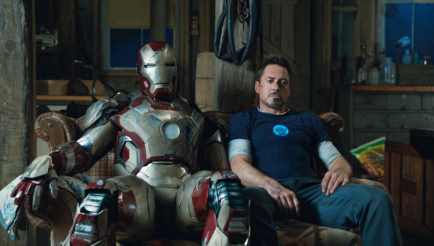
Image via Iron Man III
In Iron Man III, when attacked, Stark directs his armor to protect the woman he loves knowing he could die. He is kind to the kid who’s being bullied. Yes, he’s a jerk, but he knows it and is working to be a better man, even if the path for redemption has not yet been clearly revealed.
Now, to look at the other side of the spectrum. Often to avoid the cliched “too perfect” character, an author will stray too far to the other end of extremes. The brooding dark protagonist is tough to pull off. In life, we avoid these unpleasant people, so why would we want to dedicate our free time to caring about them? Oh, but the author will often defend, “But he is redeemed in the end.” Yeah, but we’re expecting readers to spend ten hours (average time to read a novel) with someone they don’t like. Tall order.
To quote mega-agent, Donald Maas (The Fire in the Fiction):
Wounded heroes and heroines are easy to overdo. Too much baggage and angst isn’t exactly a party invitation for one’s readers. What’s the best balance? And which comes first, the strength or the humility? It doesn’t matter. What’s important is that one is quickly followed by the other.
In my opinion, this was the single largest problem with the Star Wars prequels. Anakin Skywalker was a little-kid-killer, ergo never redeemable…EVER. He needed to die badly and slowly. Lucas should never have allowed his protagonist to cross that line. Heroes NEVER kill defenseless little kids. It was (my POV) an unforgivable action on the part of the “hero” that cratered the epic.
*eye twitches*
What are some of your favorite characters in movies or in books? Why did you “like” them? How were they flawed? What other characters fell flat? You could never like them because they passed a certain line?
I LOVE hearing from you!
To prove it and show my love, for the month of October, everyone who leaves a comment I will put your name in a hat. If you comment and link back to my blog on your blog, you get your name in the hat twice. What do you win? The unvarnished truth from yours truly. I will pick a winner once a month and it will be a critique of the first 20 pages of your novel, or your query letter, or your synopsis (5 pages or less).
Also, for all your author brand and social media needs, I hope you will check out my new best-selling book Rise of the Machines—Human Authors in a Digital World.


October 17, 2013
Fueling the Muse Part 2—How to Give Your NaNo Story a Beating Heart and a Skeleton
Image via Flikr Creative Commons. Bansky’s “Peaceful Hearts Doctor” courtesy of Eva Blue.
All right. We’re discussing ways to fuel the muse before NaNo. Yesterday, we discussed movies and how to use them, and today we’ll delve a tad further. One of the major reasons many writers fail to complete the story is there isn’t a single CORE story problem in need of resolution. The story dies because it lacks a beating heart and a skeleton.
Stories with no hearts and skeletons are primordial adverb ooze and not good for much other than scaring small children.
A great trick NYTBSA (and spectacular writing teacher) Bob Mayer taught me was to go to the IMDB and look up log-lines of movies. Search for ones similar to the story you want to write and use it as a template.
For instance, the log-line for Romancing the Stone is:
A romance writer sets off to Colombia to ransom her kidnapped sister, and soon finds herself in the middle of a dangerous adventure.
Okay, so here is “Kristen’s story”:
An OCD accountant sets off to Mexico to find her missing little brother and soon finds herself in the middle of a dangerous adventure.
When it comes to log-lines, I would have written Romancing the Stone THIS way with this formula:
Protagonist must do X (active goal) in order to stop X (antagonist) before super bad thing happens (ticking clock).
A fraidy-cat romance author (PROTAGONIST) must travel to Columbia and partner with a shady smuggler to rescue her sister (ACTIVE GOAL) from jewel thieves (ANTAGONIST) before they feed her sister to alligators (SUPER BAD THING/ TICKING CLOCK).
Using this formula and log-line, we can use it as a pattern for my made-up-this-morning story:
An OCD accountant (PROTAGONIST) must travel to Mexico City and partner with a former Green Beret ex-patriot to save her prodigal brother (ACTIVE GOAL) from a drug cartel (ANTAGONIST) before the cartel makes him an example to other dealers who lose shipments to Border Patrol (SUPER BAD THING/ TICKING CLOCK).
I just made up this log-line, but doesn’t it speak VOLUMES about the story? Why is the accountant OCD? Is she the older child who took care of a younger brother who was out of control? The more little brother got involved with bad people, the worse her OCD became? By using “prodigal brother” we get a sense that maybe he was trying to turn his life around and leave being a user and a dealer.
Ah, but “getting out” isn’t so easy.
By saying we have an “OCD accountant” we’ve picked the WORST person to send into the filthy bowels of cartel-land, let alone partner with a Green Beret. She’s going to want to control everything and maybe even use disinfecting wipes on all things in sight (including her Green Beret friend). We see how this could easily be a thriller, a romance, or even a comedy depending on how we write it.
With just this ONE sentence, we KNOW how the story ends and where. It ends in Mexico with brother alive and drug cartel either dead or in jail. So, we know where we are GOING. This makes plotting (even very basic Pantser-Plotting) simple. If our OCD accountant ends up in Kansas instead of Mexico, we know we took a wrong turn.
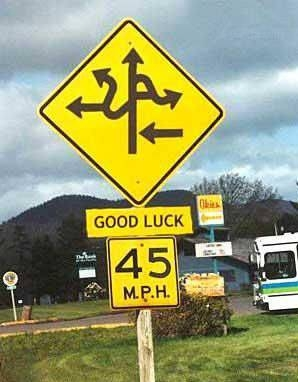
NaNo can feel a little like THIS…
There are now only so many options that lead to Mexico and finding little brother. There are only so many ways she can encounter an ex-pat Green Beret. Does he save her from being mugged? Does she HIRE him? Does he hit on her in the airport and she turns him down because his clothes are wrinkled and now she can’t get rid of him?
This log-line tells us VOLUMES about character arc, and, as the late Blake Snyder said, “Everybody arcs!”
Accountant is going to have to get over her OCD and become less controlling/neat-freakish, and maybe Green Beret needs to lighten up or even be more serious. If he’s an ex-pat, he could be running a sunglass kiosk on the beach and his motto is “Don’t worry, be happy” because he spent enough years being serious. His relaxed manner might drive her insane.
Formula for AWESOME conflict.
By looking at the IMDB, we can check out movies we loved and likely find there was a solid core story problem (code for “good log-line”). Most of the movies we hate? The ones where we are all like, “Great, two hours I can NEVER get back.” Odds are? Crappy log-line.
Worst….movie….ever (and I don’t give a rip what Sundance says). Melancholia. But I should have known from the log-line:
Two sisters find their already strained relationship challenged as a mysterious new planet threatens to collide with Earth.
[image error]
Image from “Melancholia” but also Kristen’s face the ENTIRE TIME WATCHING THIS MOVIE.
Who is the protagonist? There ISN’T one (trust me on this). What is the active goal? Again, NOT THERE. “Finding a strained relationship challenged” is NOT AN ACTIVE GOAL.
It’s a sentence for misery.
The movie is literally two sisters b!tch!ng at each other until everyone dies….and there was much rejoicing because I hated everyone in the movie and was happy they were all obliterated.
Yes, there is a super bad thing/ticking clock (a mysterious planet threatens to collide with the Earth) but there is NO WAY TO STOP IT. So the viewer is trapped with the Family from HELL until everyone dies.
The end.
ARRRRGGGGGGGHHHHHHHHHH!
We can learn a lot about what TO DO by studying what NOT TO DO. Yeah, yeah, Melancholia was pretty and had great cinematography and if you watch the movie on MUTE, it probably rocks. But for story? Not there. Trust me. This is three and a half hours of my life I will never get back AND $15 because I was stupid enough to BUY the movie and I can’t even regift it because there is no one I hate that much.
Sorry if I have offended any readers who LOVED Melancholia.
But, feed your muse a solid log-line to keep hold of and this will help you spot Bunny Trails of DOOM far easier. It will keep you on track and make that 50,000 words something solid that can be revised, because there will be the bones and beating heart of an actual story beneath all the superfluous description, poor dialogue or small rabbit trails all of us have to edit out later.
What are your thoughts? Does this formula help? What are some of the best/worst movies you have seen? Can you tell a stinker from the log-line?
I LOVE hearing from you!
To prove it and show my love, for the month of October, everyone who leaves a comment I will put your name in a hat. If you comment and link back to my blog on your blog, you get your name in the hat twice. What do you win? The unvarnished truth from yours truly. I will pick a winner once a month and it will be a critique of the first 20 pages of your novel, or your query letter, or your synopsis (5 pages or less).
Also, for all your author brand and social media needs, I hope you will check out my new best-selling book Rise of the Machines—Human Authors in a Digital World.


October 16, 2013
Fueling the Muse for NaNoWriMo—Part One
Yesterday, we talked about fueling the muse to go the distance. For the professional writer, every month is NaNoWriMo, so there is NO BETTER indoctrination into this business. NaNo shapes us from hobbyists to pros, but we need to do some preparation if we want to be successful—finish 50,000 words and actually have something that can be revised into a real novel that others might part with money to read. Genre obviously will dictate the fuel required, but today we’ll explore one of my favorites.
Movies
Feel free to watch movies similar to your genre for some immersion, but this really isn’t what I’d encourage you to study.
Plot
Study plot points. Sit with a notebook and write out in one to three sentences:
Normal World
What was the character’s life like before it was interrupted by the BBT’s (CORE ANTAGONIST’S) agenda? I will use two divergent examples—World War Z and Steel Magnolias— to make my point and hopefully not spoil the more recent of the two. As far as Steel Magnolias? Y’all have had since 1989 to see it. Tough  .
.
In World War Z, we meet a guy making breakfast for his family. He’s hung up some mysterious “old bad@$$ life” in order to be with his wife and kids.
In Steel Magnolias, we meet M’Lynn taking care of all the little details of her daughter’s wedding. She’s a Hover-Mother who takes care of the broken glasses, finds the right shade of pink nail polish, and stops Dad from shooting birds out of the trees. She’s a fixer and she’s in control.
Inciting Incident
This is the first hint of the BBT’s (Big Boss Troublemaker’s) agenda, the first tangible place it intersects with the protagonist’s life and causes disruption.
In World War Z, Jack and his family are in the car. He and his wife are on their way to take the kids to school when all hell breaks loose. It’s the first glimpse the protagonist sees of the looming threat, but aside from escaping with his family, he’s made no vested decision to get involved.
In Steel Magnolias the Inciting Incident happens in the beauty shop when Shelby’s blood sugars drop dangerously low and she goes into convulsions. Mom tries to help and Shelby swats her away (a hint at her future defiance). This is the first time the audience has met the BBT (Death/Diabetes manifested in the proxy Shelby).
Turning Points
Look for the major turning points in the movie. According to one of my FAVORITE craft books (Story Engineering) in Act One, the protagonist is running. He or she doesn’t know where exactly the conflict is coming from or precisely what IT is. Act Two, the protagonist is a Warrior. He or she has glimpsed the face of the BBT and fights back.
For instance, in World War Z, Jack knows it’s a virus creating “zombies” and he decides to return to the old job and fight. He agrees to search for Patient Zero in hopes they can find a cure.
In Steel Magnolias, M’Lynn shifts from Running (Here’s your orange juice. Have you checked your blood sugar?) to Warrior. Her daughter defies her and decides to get pregnant even though it could (and will) cost her life. Momma puts on full battle gear, determined to “control” her daughter’s fate. Diabetes has shifted from looming “controllable” threat to a ticking time bomb Mom still believes she can diffuse if she just tries hard enough.
Act Three, the protagonist shifts from Warrior to Hero.
Darkest Moment
This is right before the turning point to Act Three. This is where EVERYTHING is stripped away from the protagonist and it seems all is lost. The DM is the catalyst that shifts our protagonist from Warrior to Hero. Anyone else would give up the “fight” and go home, but not our protagonist.
In World War Z the protagonist is critically injured, he’s lost his family, outside help, and he’s faced with a crushing setback. There is no Patient Zero, at least no “clear” Patient Zero. It’s a dead end and it looks like time has just about run out for humankind.
In Steel Magnolias Shelby dies despite all of M’Lynn’s tireless efforts to control. She realizes she has no power. She never was in control and now she’s utterly lost.
Act Three/ Character Arc
How does the protagonist mentally shift over the course of the story? What was the critical flaw that would have held them back in the beginning, that would have made the protagonist “lose” if pitted against the BBT.
For Jack, he has to be willing to give up his family to save his family.
For M’Lynn, she has to admit she can’t control life or death in order to embrace the messiness of living.
How is the story problem resolved?
Pay attention to the Big Boss Battle. How has the protagonist changed? What decisions do they make (or not make)?
What is the outcome? How is the world set “right”?
In World War Z, Jack’s sacrifice gives humanity a fighting chance. In Steele Magnolias we see little Jackson (biological grandson) running and picking up Easter eggs (there is NO mistake that this story is bookended by Easter). Resurrection through Jackson is what ultimately defeats Death. Shelby lives on through her little boy.
Dialogue
Great movies have great dialogue. Study it. How do characters talk? When I get submissions, one of the major problems I see is in dialogue. Coaching the reader, brain-holding, and people simply talking in ways that are unrealistic. For instance, most of us, when having a conversation, don’t sit and call each other by name.
“But, Bob, if Fifi goes base-jumping she could die.”
“Yes, Joe, but it’s Fifi’s life and if she want’s to be stuff on a rock, it’s her decision, not ours.”
“I agree, Bob, but I love Fifi.”
“Joe, then tell her. Fifi’s craving attention.”
*rolls eyes*
If you’re writing a military book, watch a pal play Call of Duty or Modern Warfare. Game designers use folks from Special Operations as consultants. They use DELTA Force, Green Berets, SEALS, etc for all the world-building, so why reinvent the wheel? Hollywood is notorious for getting this stuff dead WRONG, so if you want accurate military dialogue, games are better. Or, watch movies who’ve done their homework, not shoot-em-up brain candy flicks.
And for any military folks out there, I could NOT resist. No drinking fluids near keyboard while watching…
Setting
Movies are great for getting an idea of setting. Pay attention to the terrain and make notes.
Fill that muse to bursting and NaNo will be a LOT easier.
Another HUGE help for NaNo is a solid core story problem. I strongly recommend my antagonist class TONIGHT.
Anyway….
What are your thoughts? What are some things you do to prepare to write a novel? What movies have the best dialogue? Setting? Yes, I know I have ruined all movies for you. You will thank me later  .
.
I LOVE hearing from you!
To prove it and show my love, for the month of October, everyone who leaves a comment I will put your name in a hat. If you comment and link back to my blog on your blog, you get your name in the hat twice. What do you win? The unvarnished truth from yours truly. I will pick a winner once a month and it will be a critique of the first 20 pages of your novel, or your query letter, or your synopsis (5 pages or less).


October 15, 2013
Preparing for NaNoWriMo & Feeding the Muse to Go the Distance

Image via Flikr Creative Commons, courtesy of Yosi Lazarof
All right, new flash. Writers are different *head twitches*. This might not be news to any of you, but I imagine some of you are in denial. I know I was for ages. As I mentioned in Friday’s post, there are a lot of activities we must do to write great stories that, to the outside world, look a lot like goofing off. We aren’t goofing off (though without discipline it can become that).
We must fill our creative well before we write, or we have nothing to draw from.
Creative people are a lot like tigers. We do a lot of what looks like laying around and warming our bellies in the sunshine. Yet, what we’re really doing is powering up because, once we go after that first draft, those words can be more elusive than a gazelle that’s doping.
Regular folks who clock in and clock out of jobs in cubicles are grazers. They do the same routine day after day. *munch, munch, munch*. I feel this is often why creative people feel so stifled in these environments. We’re tigers stuffed in a non-tiger role.
TIGER BLOOD! *giggles*
Strong writers are apex predators who lurk, plan and power-up until go-time.
I spent two and a half years researching for my latest book Rise of the Machines—Human Authors in a Digital World. I read a lot of books on neuroscience, sociology, communication, the history of communication, leadership, sales, etc. This doesn’t look (to many others) like working. Yet, it was. I was filling my mental reservoir. When my hands met the keyboard, I wrote almost 90,000 words in six weeks.
Same in fiction. I knew I wanted my book to involve Mexican drug cartels. What did I do? I watched A LOT of documentaries, read books, articles, blogs, collected images, and played video games.
Yes, video games. More on that in tomorrow’s post.
Take Time to Fill Up
Too many writers fail to finish NaNo because they haven’t fueled up properly. If one studies any endurance athlete, what do they do before an Iron Man or the Tour de France? They EAT. A LOT. Endurance athletes know they need the extra weight because it isn’t uncommon for participants to lose as much as twenty pounds by race end.
Yet, how many of us go into writing a book with a malnourished, anorexic muse?
Feed the Subconscious
Part of why I love NaNo and Fast Draft is it does a number of things. First, it tires out the analytical side of the brain that wants to edit and make everything “perfect.” DON’T EDIT. If you’ve taken time to feed the muse, your “Boys in the Basement” could be doing some seriously cool mojo, and if you edit that out? You can benevolently tank your story.
Often a lot of the subplots or cool twists and turns come from all the stuff we fed the muse ahead of time. For instance, there is a scene in my book where they find an old drug house and of course teenagers and addicts have been in there and there’s a ton of graffiti. There are the usual pentagrams, devil-worshipping symbols, goat heads, gang signs, profanity, etc. but my fingers typed (seemingly of their own accord) that there was also a veve of Papa Legba.

Veve of Papa Legba courtesy of Wikimedia Commons
Huh? Voo-doo in southwest Texas? Where did THAT come from?
Probably a documentary. I began to backspace over it, but then let it ride. My character (who is a tad on the geek side) notices the veve, recognizes it, and finds it odd and “out of place.” This is all that is mentioned of the veve in this book…because my subconscious already had the plot for Book Two and it will apparently involve Voo-doo and Santeria.
My subconscious must have pulled up the multiple news stories of bodies with hearts removed (or headless) who were presumed to have been killed in ritualistic fashion by cartel leaders for otherworldly protection over their operations. My muse was placing the perfect bread crumb in the story to lead to the next one.
But what if I hadn’t “wasted” all that time reading and watching documentaries? What would my muse have been able to draw from? A bag of stale Goldfish or a buffet?
Another reason I love NaNo is that once we tire out the analytical side of the brain, we can fall into a sort of trance, much like a runner’s high. This is where the muse hits overdrive, and, since we are SO immersed in the story, we become part of that world.
This means we’re less likely to lose ideas or make major mistakes because we’re hyper-familiar with the terrain. If we start writing, then put a book away for a month and try to pick it back up, we need to do a lot of refreshing and the story can become jaunty and incongruent.
I recommend an earlier post Write FAST and Furious! Learning to Outrun “Spock Brain.”
My recommendation before writing ANY book is total immersion. I read a lot of submissions and many of them have a bunch of fluff and filler and that could have been avoided if the writer had more research to draw from. It’s easier to use setting powerfully if we’ve researched the terrain ahead of time. What do people in certain roles or regions talk like? The more facts, images, and stories (even news stories) we have in our head? The richer the work and the easier to give our writing texture.
Tomorrow, we will discuss some ways to fill the muse. And yes, a lot of it might look like goofing off, but runners preparing for a mega-marathon do a lot of what looks like eating a ginormous bowl of pasta or downing special protein drinks. Not especially glamourous, but essential for success.
Another HUGE help for NaNo is a solid core story problem. I strongly recommend my antagonist class TOMORROW. Use WANA15 for 15% off. Also, Jami Gold has an AWESOME Plotting for Pantsers TONIGHT. Use the promo code gopants for $10 off!
Anyway….
What are your thoughts? What are some things you do to prepare to write a novel? Do you find yourself stuck partway through and have to go do more research because you know you didn’t prep well enough ahead of time?
I LOVE hearing from you!
To prove it and show my love, for the month of October, everyone who leaves a comment I will put your name in a hat. If you comment and link back to my blog on your blog, you get your name in the hat twice. What do you win? The unvarnished truth from yours truly. I will pick a winner once a month and it will be a critique of the first 20 pages of your novel, or your query letter, or your synopsis (5 pages or less).
Also, for all your author branding and social media needs, please check out my new best-selling book Rise of the Machines–Human Authors in a Digital World.


October 11, 2013
NaNoWriMo—Training Lean, Mean, Writing Machines
Yesterday Jami posted about NaNoWriMo (National Novel Writing Month), and I really hope you guys take her class because she is truly a gifted teacher. Today, I want to talk a little bit about what writers (especially new writers) can gain from NaNo.
NaNo Teaches Endurance
I remember years ago thinking, “Wow, if I could just write a thousand words a day, that would be AMAZING.” When I looked at professional authors, it was like watching a marathon runner—all the while knowing I couldn’t run a flight of stairs without requiring oxygen and possibly a defibrillator to restart my heart. I so struggled to get words on a page, and Lord help me if I saw something shiny.
Of course, after years of practiced discipline, I generally have a thousand words written by breakfast. When I fast-draft (which I do for all my books), my average is abnormally high. But that took YEARS to train to write that clean and that FAST.
NaNo is a lot like a military bootcamp. Many who sign up for military service aren’t in the fittest condition. Sure, we might meet the weight requirements (or get a waiver), but most of us don’t start out being able to knock out a hundred pushups on the spot. We likely have little experience running ten miles with a heavy pack of gear on our backs.
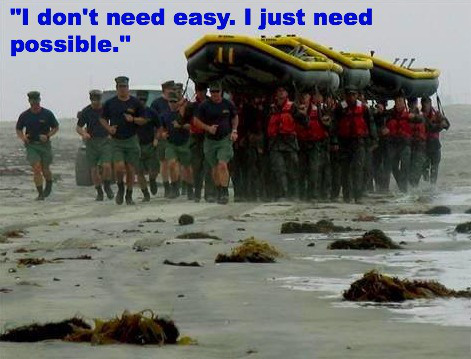
Image and quote courtesy of SEAL of Honor on Facebook.
We have to be trained. Bootcamp is designed to push people to the breaking point and then beyond. It challenges trainees physically, emotionally and psychologically. Usually it involves some guy yelling in your face who makes run you all day long, do a bazillion cherry-pickers, lunges, push-ups, sit-ups, etc.
He screams at you as you run obstacles then wakes you at four in the morning to do it all again. You get three minutes to shovel in as much food as you can, just to go run at one in the afternoon in 115 degree heat until you puke.
Fun stuff  .
.

Image via Flikr Creative Commons, courtesy of West Point Military Academy.
NaNo Trains in Mental Fitness
But this “brutality” has multiple purposes. First, most of us underestimate what we are capable of doing. D.I.s (Drill Instructors) drive us into a zone we’d probably never step a toe into if left on our own. Secondly, when you are physically exhausted, you’re also psychologically exhausted. Can you keep your cool or do you lose your temper?
Don’t. You get to run an extra two miles while holding a rifle over your head (ask me how I know  ).
).
This “beating” trains recruits to remain calm no matter what, to be able to think and make fast decisions while under duress, to remain focused no matter what is “blowing up” all around.
Writing is an extraordinarily intense activity. Sure, the professionals make it look easy and that’s why the world thinks we spend all day drinking wine and talking to butterflies. Regular people have zero concept of the mental and psychological endurance it requires to not only finish a novel, but to write someone other people will pay money to read.
NaNo, in my opinion, is bootcamp to train up professionals. Granted, no one is shooting live rounds at us while we belly-crawl through mud, BUT we do have to put words on a page even when the toddler has to go to the potty every thirty seconds. Many of us are also working a day job and we have family drama shooting rounds at us from all directions.
As I’ve said many times before, “Life doesn’t stop because we decided to write a book.” I’ve met NYTBSAs who were taking care of dying family members all while meeting deadlines. They’d had tragedies, or illnesses or a cancer diagnosis and yet they still sat in the chair and put down words.
I know how many of you feel. I was new once, too. No one was tossing a grenade my way, but I had to field the negativity and smart@$$ comments from people who believed writing wasn’t “real” work. In their minds, I might as well have been sitting with a coloring book all day. I had to learn to ignore that nonsense if I wanted to press to the end.
NaNo Trains Out Perfectionism
NaNo trains us to keep pressing even when it isn’t pretty. Back to bootcamp for a sec. Trust me when I say a bunch of kids with a pack running in summer up a hill ain’t pretty. The D.I. doesn’t care how we look. He cares we made it to the top with all our gear.
Our face could be purple and our boots coated in dirt and puke. Doesn’t matter. You’re at the top of the hill, and you can clean your boots later. Stop to clean your boots halfway up a hill and you’ll earn some extra push-ups and another mile or two while the others (who didn’t stop) get to eat and rest.
As Voltaire said, “Perfect is the enemy of the good.” By the time you finish NaNo, I promise you will have puke on your shoes (they look a lot like redundant adverbs and silly metaphors). That’s what revisions are for. Too many writers stop to polish their boots prose at the expense of making it to the top of the hill The End. NaNo is the D.I. there to beat that out of us.
Writers who make a good living write at least a book a year and often more. Writers who spend all their time polishing their boots are the ones who never finish, or they take five, seven or even ten years to finish a novel.
So what if they land that three-book deal? NY isn’t going to give them 15 years to finish.
I hope you guys will give NaNo a try. If not, check out Candace Haven’s Fast Draft, though she’s more like Navy SEAL training. You get TWO weeks to finish a novel, not FOUR. People who don’t think writing is physically exhausting should try writing 5,000 to 8,000 words a day fourteen days straight. I’ve completed her Fast Draft three times and it made me a faster, cleaner writer…and my masseuse a richer person  .
.
So have we convinced y’all to join in the “fun”? Have you done NaNo before and finished? Have to failed to finish? Why? What are you hoping to change to improved your odds of success? Tips? Tools? Suggestions. As you know we DO have Jami’s class (check yesterday’s post for discount codes) and my antagonist class is also coming up on October 16th and can make a HUGE difference when it comes to starting any project with a solid core story.
I LOVE hearing from you!
To prove it and show my love, for the month of October, everyone who leaves a comment I will put your name in a hat. If you comment and link back to my blog on your blog, you get your name in the hat twice. What do you win? The unvarnished truth from yours truly. I will pick a winner once a month and it will be a critique of the first 20 pages of your novel, or your query letter, or your synopsis (5 pages or less).
Also, for all your author branding and social media needs, please check out my new best-selling book Rise of the Machines–Human Authors in a Digital World.


October 10, 2013
How to Make Sure Your NaNo Project Isn’t a Hot Mess
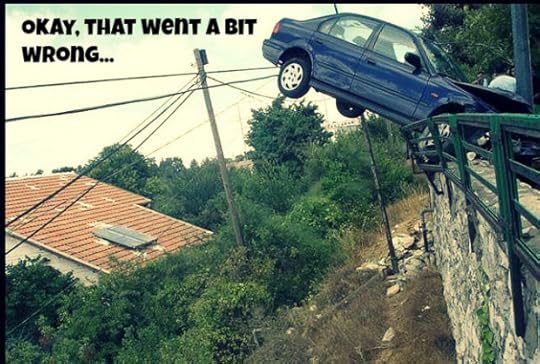
Image via Flikr Creative Commons, via Stupid.Photos
I LOVE NaNoWriMo (National Novel Writing Month, which is November). It is a fantastic way to push ourselves and also for new writers to be introduced to a professional pace and a professional attitude. When we do this “writing thing” for a living, we have to write no matter what.
I’ve written books while a toddler stood whacking me with a sword. I’ve written blog posts from hospital rooms or the day after funerals. Life doesn’t stop because we want to “create.” Family gets sick, houses need to be cleaned, and bills need to be paid. Often we have to balance a day job, too.
Though I encourage you all to try NaNo, I offer a caveat. Invest in a little planning.
There are few things more defeating that to a) start off hot and heavy only to write ourselves into a corner or b) invest a month of suffering and sleep-deprivation only to end up with a derailed mess that can never be repaired short of tearing it down to the foundation and starting over.
I’ve seen a lot of first drafts that, by the end? Kinda resemble that poor baboon from the movie The Fly. The one who didn’t make it through the transporter? *shivers*.
Jami Gold is a WANA instructor and a FABULOUS teacher. She’s here to give you some tips for your NaNo journey, but her advice is sound for ANY writing. Most writers who make the good living publish more than a book a year, and they certainly don’t take five, six or TEN years to finish. I can’t tell you how many writers I see year after year at the same conference shopping the same book they’ve been trying to land an agent for since 2007.
WANA is here to prepare you for your brilliant future!
Take it away, Jami!
How to Make Sure Your NaNo Project Isn’t a Hot Mess
So, you’re thinking about doing NaNoWriMo? Great! Every writer should probably sign up to do NaNo at least once. We never know what process might work for us until we try.
But what do we do after we decide to go for it? The sheer number of words required for NaNo can be intimidating by itself. 50,000 words? To some of us, that sounds like a lot.
Maybe we’ve written mostly short stories or novellas, or maybe we get stuck at the 30,000 word mark and haven’t finished a story before. Add in the 30-day deadline and NaNo can sound like it’s geared toward gluttons for punishment. *smile*
But It’s a GOOD Kind of Punishment
No matter what—whether we “win” NaNo or not—we’re going to learn something about ourselves. We’ll learn about our ability to focus, our ability to meet deadlines, our performance under stress, our ability to crank out words (any words) when needed, and what writing processes might or might not work for us in the future.
Good stuff! All that alone makes the time and effort spent doing Nano worth it.
But what if a decent story comes out of that time and effort too? That’s a super-bonus for us.
So while time spent doing NaNo is never “wasted”—even if we end up with a hot mess at the end—finishing up with useable writing is preferred. The question now becomes, how can we prevent that “hot mess”? *smile*
Planning, Planning, Planning

Writing can feel a little like THIS…
I’m a pantser, which means I write by the seat of my pants. Story outlines? Blech! Scene cards? Ugh. Give me a blank page and a vague idea and I’ll write ‘til my fingers ache.
But… *sigh* But I’ve also learned that I get stuck less often if I know what direction I’m heading.
To build on an analogy Kristen used in a workshop during this past weekend’s WANACon, I might not know what roads to take (scenes) and I might not know the exact turns to make (story turning points), but I know I need to head west to get to the destination of California (the story’s end).
We all get stuck in our stories sometimes, but during the deadlines and word count pressure of NaNo, getting stuck can kill our chances of winning. So if planning can help minimize the amount or length of those “stuck points,” we’ll be better off.
What Does NaNo Planning Look Like?
This planning can look different for everyone. Stories consist of (at least) two main arcs: the story/plot arc and the character/emotional arc.
At their essence, all stories are about change. They start at Point A and things happen in a cause-and-effect, action-reaction chain to end up at Point B.
Story/plot arcs are about the “what” or the “why.” What happens to make things change? Why is the story happening now and not a year ago?
Character/emotional arcs are about the “who” and the “how.” Who is facing the obstacles and has to change to succeed? How are they changing?
Most stories are a mix of those plot-driven and character-driven questions. But we might not need to plan ahead with both. Some of us are better at winging one type of arc than the other.
That’s why everyone’s blog post about “getting ready for NaNo” looks different. Some people are focusing on the plot elements—filling out beat sheets or story outlines—because that’s what they need. Others are focusing on the character elements—filling out character sheets or writing character backgrounds—because that’s what they need.
There’s no right or wrong answer here. And part of the beauty of NaNo is discovering what kind of writer you are. Once you know, you’ll know what tools you can skip in the future.
The Basics of Planning for Plot

Image vis Flikr Creative Commons, courtesy of Yuya Sekiguchi.
If we’re better at making up characters as we go along, we might want to plan some of the main story turning points.
What drags the character into the story and forces them to make a choice to get involved?
What raises the stakes and tension during the middle of the story?
What’s going to make the character lose hope before the end?
What’s going to push the character to change and face the obstacles at the end?
We can plan a lot more obviously, but that gives us a starting point and an ending point. That Point A and Point B will give us a direction as we write. And even if we’re the pants-iest pantser, that much planning is less likely to freak out our muse than doing a full story outline.
The Basics of Planning for Character
On the other hand, if we’re better at making up scenes and plot points as we go along, we might want to plan the character arc. That means we have to know the character’s Point A and Point B.
Some people find character arcs harder to “see” because they’re more mental than physical. But in character terms, Point A and Point B means we have to know their destination (what they want) and their beginning (what’s holding them back).
What does the character long for and desire? (story ending)
What choices are they making that keep them from their dream? (story beginning)
What do they learn? (how they change)
What are they willing to do at the end that they weren’t willing to do before? (story climax)
Those tips are the ground level of planning for plot and character arcs, and for some people, that might be all they need to get going. At some point though, even most pantsers will need to plan a bit deeper to get unstuck. That’s where my “Lost Your Pants? The Impatient Writer’s Guide to Plotting a Story” workshop through WANA International comes in to help.
I’m offering my workshop next week (October 15th and 17th) just in time for NaNo. I teach a plotter and pantser-friendly method for planning our stories just enough to write faster and get unstuck. Kristen’s blog readers can get $10 off by using the Promo Code: gopants.
(Note: If the days/times aren’t convenient for you, everyone who signs up receives a full recording of the class and a thorough handout. I teach this class about once a year, so keep that in mind when deciding whether to sign up.)
I won’t be doing NaNo this year, as I’m not in the right spot with any of my writing projects to do it, but I had a great time last year. I’m “Jami Gold” if you want to buddy me so I can cheer you on from the sidelines. *smile*
Will you be doing NaNo this year? If not, what’s holding you back? Does this post help you know what you need to plan in advance? Can you make up the plot or character arcs as you go along, or both (or neither)? Do you have any questions about my workshop?
***
THANK YOU, JAMI!
I LOVE hearing from you! And, like always, comments for guests count DOUBLE for my contest.
To prove it and show my love, for the month of October, everyone who leaves a comment I will put your name in a hat. If you comment and link back to my blog on your blog, you get your name in the hat twice. What do you win? The unvarnished truth from yours truly. I will pick a winner once a month and it will be a critique of the first 20 pages of your novel, or your query letter, or your synopsis (5 pages or less).
September’s Winner is: Sean T. Smith. Please send 5000 words in a WORD document (double-spaced) to kristen at wana intl dot com. Congratulations!

Author Jami Gold
After discovering a chemical compound that makes chocolate even more awesome, Jami Gold moved to Arizona and decided to become a writer, where she could put her talent for making up stuff to good use. Fortunately, her muse, an arrogant male who delights in making her sound as insane as possible, rewards her with unique and rich story ideas.
Fueled by chocolate, she writes paranormal romance and urban fantasy tales that range from dark to humorous, but one thing remains the same: Normal need not apply. Just ask her family—and zombie cat.
Find Jami at her blog, Twitter, Google+, Facebook, Pinterest, LinkedIn, and Goodreads.





